Words Posy Gentles Photographs Various

Matthew Hatchwell and baby gorillas in The Congo 1991
Faversham’s historical heritage and its status as a town worth a visit would have been tragically diminished if Abbey Street had been given up to the developers in the 1960s. We are at a similar juncture today with Faversham’s natural heritage: its salt marshes, waterways, plants and wildlife. ‘We have the opportunity in Faversham now to decide how we want this landscape to be in 100 years time,’ says Matthew Hatchwell, wildlife conservationist. ‘Processes like the proposed Cleve Hill development are sparking interesting discussion and reflection which I heartily wish we had had five years ago.’

This bird’s eye image of Nagden and Graveney Marshes has become familiar as the Save Graveney campaign battles against the Cleve Hill development
Matthew is part of a growing movement in Faversham to create a strong and unified voice for its natural heritage, bringing together disparate groups, NGOs and experts. ‘As a community, we’re at a point where we must fight for coherent policies around building, energy and transport. It makes no sense that we have so many new houses being built in Faversham without solar panels or rainwater collection systems, and at the same time, in the name of the environment, the plan to allow over 200 hectares of land at Graveney to revert to salt marshes is fighting for survival against the plans for the massive Cleve Hill solar park.’
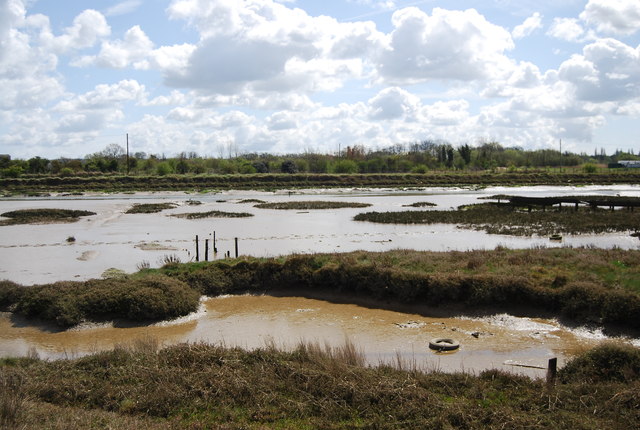
Oare Marshes © N Chadwick
Faversham Life heard Matthew gave a Faversham Society talk on Making the Most of Faversham’s Natural Heritage before Christmas and caught up with him afterwards. Matthew’s professional background is in wildlife conservation in Africa, but he says: ‘Whether you’re dealing with elephants and lemurs or eels and seahorses, the same principles apply. Conservation is about understanding the interplay of different elements and working with the community – in Faversham as much as in Madagascar. You can’t look at any species in a vacuum.’ It is unwise to treat our natural heritage as something merely quaint, pretty and nice for Sunday walks if it’s not raining. The natural heritage of Faversham is inextricably linked with its historical and cultural heritage, but it is also fundamental to our present and future.
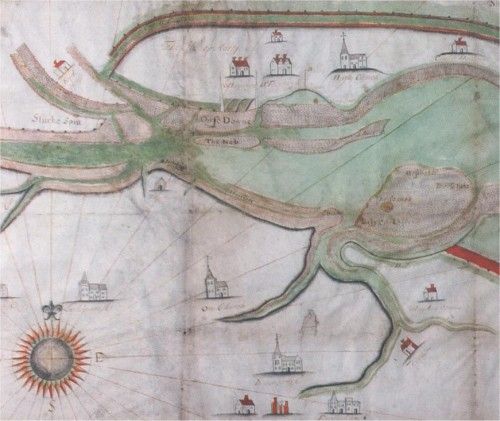
A map of Faversham and Oare Creek c1605
This became self-evident as we spoke, darting down one avenue after another. For example, Westbrook Stream, one of only 210 chalk streams in the world, was essential for the development of some of Faversham’s major industries: gunpowder manufacture, mill power and watercress. Today, water is being pumped out of the underground aquifer to supply domestic water to Faversham, so surface water levels are sinking. I have walked at Lorenden, and stood on the bridge at the foot of the hill and wondered vaguely why it’s there. Matthew says there used to be a lake.
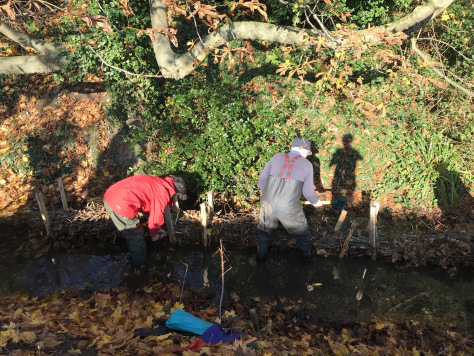
Friends of the Westbrook Stream at work
The conservationist must deal with a situation where, as national economies evolve and people have more choices, their connection to nature and dependence on natural capital (defined as the world’s stocks of natural assets which include geology, soil, air, water and all living things) diminishes. In this way, Faversham’s relationship to its landscape has gradually become more casual since human capitalisation of the landscape started taking off in the 18th and 19th centuries. It is easy to forget that the town’s very existence was shaped by its landscape. Freshwater springs made this an attractive landscape in which to settle and, later, to grow watercress and of course brew beer. Faversham’s position between marine and terrestrial ecosystems meant that it was well defended by its tidal marshes and had access to the sea for trading. For several years in the 17th century, more wool was exported from Faversham than from any other port in the country. Food was plentiful with oysters and eels in the sea and salt marshes and there was fertile land for the production of fruit and vegetables. The brick earth and woodland gave the means of building and developed into the profitable brick industry, and shipbuilding continued into the 1960s. The splendour in Faversham’s history – its Magna Carta, Faversham Abbey, its status as a Cinque Port – is due in large part to the landscape in which it sits.
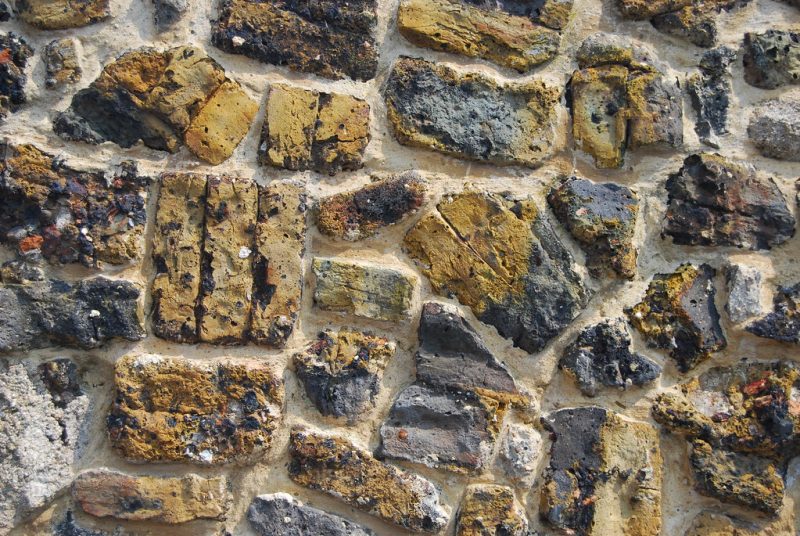
Faversham’s alley walls are a reminder of its historic brick industry
Looking to Faversham’s future, Matthew says: ‘The future development of the town needs to be rooted in the local landscape and adapted to local needs. The possibility is already being discussed of creating a Neighbourhood Plan for Faversham to shape a more coherent development policy for housing, transport and energy as well as the environment. Greater priority should be given to the conservation and non-destructive use of our natural surroundings, by protecting what remains of intact natural habitat and creating the conditions for wildlife not just to survive but to thrive. We should be restoring populations of locally extinct species such as the native oyster, sea horse and pine marten, and doing everything we can for existing ones like water voles, marsh harriers and eels.
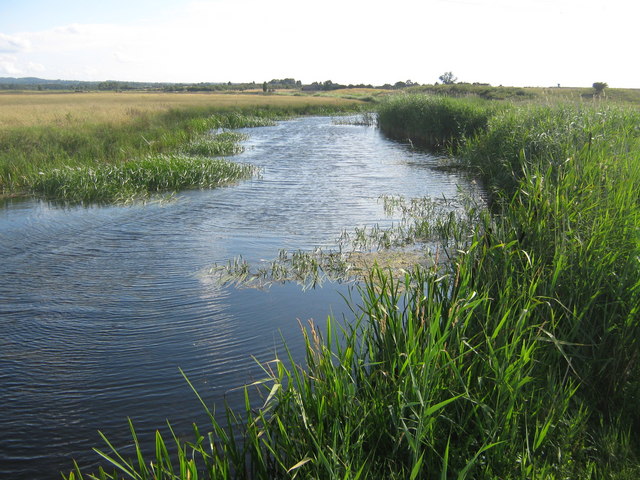
Dyke in Graveney Marshes © David Antiss
‘We also need to plan for the rising sea levels that are increasingly likely as a result of climate change. We must make better use of natural ecosystems such as salt marshes and all the benefits they bring, with areas of intact habitat safeguarded with ecological corridors established between them. This isn’t just for wildlife but also for the people of Faversham. It is proven that people’s mental health and wellbeing is better with access to natural areas.’ The alternative is to let economic development and building continue unfettered until Faversham and Sittingbourne merge.
Matthew says: ‘In a landscape like this, we ought to be working so that the whole can be more than the sum of its parts. We can achieve more, but at the moment, the framework isn’t there. There’s a lot of knowledge and expertise out there; we just need to join it up. So much of conservation work is about networking and common sense!’
Text: Posy Gentles. Photographs: Various
Friends of the Westbrook and Stonebridge Pond
Faversham Life The Plight of the Eel
Faversham Life Maligned Marshland
Faversham Life The Spring at Harty Ferry
Eel updates
Matthew is working with the Medway and Swale Estuary Partnership to assess all outfalls from freshwater courses along the Swale coast, in the Medway Estuary and extending on to the Isle of Grain to see where eel passes are needed.
An article by Matthew on eels will be appearing in the British Wildlife magazine later this year.